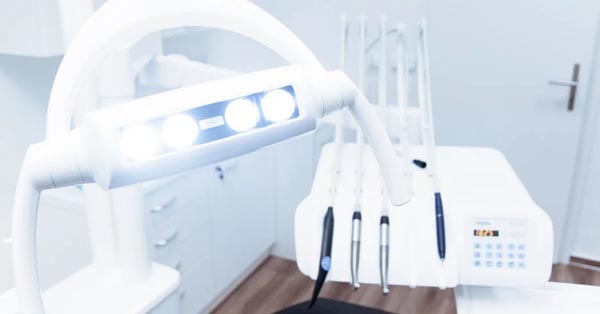Advanced dental technology: Don’t get left behind
By: Dental Economics
The advancement of dental technology can lead to high-quality care to dental patients. Along with this upgrade, we ensure to provide efficient practice for your comfort and benefit. The Oral Surgery DC Team
If you've been keeping up with developments in oral health care over the past decade, you're aware of the explosive growth in advanced dental technology. The global technology revolution may still be in its infancy, but many dental care practitioners have already experienced significant changes in the way they practice.
Some of the most impressive recent developments include noninvasive laser techniques, nonsurgical periodontal therapies, digital radiography, and operatory software. Not since the advent of intraoral cameras has there been so much excitement in the field of dentistry.
Yet many practice owners still hesitate to invest in new technology. They may be waiting for equipment and procedures to be perfected, or to achieve a certain level of cash flow before taking the plunge. Or, they may simply be so comfortable with the success of their current practices and procedures that they're not eager to "upset the apple cart."
Nevertheless, waiting to take advantage of these new technological developments can be risky business. You may wake up one day to find that you're so far behind your competitors in providing the quality care and increased efficiencies available with today's technology that it's nearly impossible to catch up. You may notice that you're losing your best employees to high-tech competitors, and you're not attracting the same quality patient base that you once did.
Of course, transitioning your practice to a high-tech business is a considerable undertaking, both financially and logistically. So before making an investment, be sure you understand the answers to these important questions:
- Will advanced technology really help me provide better and more comfortable patient care?
- How will transitioning to high-tech equipment impact my practice?
- How much will my productivity increase?
-
Will I get a return on my investment?
The promise of higher-quality care
Much of the new technology developed for dental practices is focused on delivering better patient care. We can, in fact, see the positive results of high-tech dentistry when we compare the oral health of U.S. citizens to those from less-advanced countries. In the U.S., natural teeth are lasting longer, gums are healthier, and oral diseases are detected much earlier, thanks to advances in dental technology.
The advantages for patients are not only more effective oral care, but less invasive procedures. With laser equipment now available for early detection of caries, treatment of caries, treatment of periodontal diseases, and teeth cleaning, patients can experience a significantly increased level of comfort for most dental procedures. In addition, advanced technology is providing greater convenience for patients, making it easier to maintain their oral health as less chair time and fewer repeat visits are required.
Most patients recognize the enhanced value they receive with advanced equipment and technology, and they are willing to pay higher fees for these procedures. In fact, technology developments and the resulting fee increases have contributed to the continuing growth of the industry. According to the ADA, dental care spending is expected to be in excess of $90 billion in 2006, and is slated to top $100 billion in 2007.
In general, it's safe to say that the technology available today significantly increases patient comfort and convenience, while providing better overall preventive, restorative, and cosmetic care.
Building efficiency into your practice
Today's advanced communications and equipment technologies have demonstrated their ability to improve the efficiencies of the average dental practice. Productivity increases significantly with integrated computer systems that link to your insurance companies, allow immediate access to patient charts and billing data, connect operatories with the front desk, provide patient education, and deliver patient e-mails. Moreover, new laser equipment and digital radiography save valuable time at the chair.
Of course, there's no "rule of thumb" for exactly how much your productivity will increase when you integrate new technology because no two practices are identical, but you can get a good sense of potential improvements in practice efficiencies by speaking with colleagues who have migrated to advanced technology.
You also can set meaningful goals for productivity improvements to offset your technology investment. For instance, track how long it currently takes for each practice function - from billing and sending out appointment reminders, to hygiene appointments and specialty procedures. If you are able to attain a 10 percent to 20 percent increase in productivity through the integration of new technology, how much extra time will that leave your practice for additional appointments, procedures, or marketing activities?
Creating a rewarding work environment
Many doctors have claimed to enjoy their practice considerably more since migrating to high-technology systems. Learning the new systems enhances teamwork and clearly makes dental care easier for patients, but also for the doctor and staff. Staff members tend to feel proud of the high level of services the practice provides, contributing to a sense of enthusiasm in learning and practicing new techniques and in overall increased employee morale.
My friend, Dr. Kevin Barrett, a practicing dentist in Los Angeles, says, "I have been practicing dentistry since 1978 and have never been so excited about going to the office. I now own five lasers and use them every day. I am presently waiting for a new CAD/CAM system - actually, my whole office is waiting and excited."
Perhaps because of the high level of satisfaction in working with today's advanced equipment, investment in new dental technology by U.S. dental practices has gone up significantly in the past decade. The cost to open a new high-tech practice now runs from $350,000 to $500,000, due in large measure to the cost of advanced dental technology.
Ensuring a positive ROI
Of course, providing higher quality of care, improving practice efficiencies, and increasing staff morale are all worthy outcomes of your technology investment that will ultimately produce increased cash flow. However, keep in mind that there is a cost associated with these new benefits. To ensure a quicker return on your investment, you will need to reassess your fee schedule and determine how much to increase patient fees for advanced procedures.
Unfortunately, there is no simple formula for determining how much to charge for advanced procedures and their added benefits. Your management consultant and CPA can help you determine the appropriate fees for your practice. Patients understand the value of advanced services and appreciate the need to pay for them. In fact, if given a choice, most patients will happily pay extra for a shorter, more comfortable dental appointment!
According to Dr. Barrett, "There are many advantages to becoming a high-tech dentist - most of all, patients respect and appreciate the fact that you have kept up with advancements in dentistry." In general, dentists who have invested in high-tech equipment have not only recouped their costs in the short term, but recognized a significant profit as well.
Knowing when to upgrade
One of the more difficult decisions you will make concerns upgrading or buying new equipment. If you ask yourself: "Should I make the leap into advanced technology now, or wait for the next generation of upgrades?" The answer is that the future is now. Don't wait - make the leap now, if at all possible - and keep upgrading as your practice grows.
Dental technology is advancing at a tremendous rate, with new composite materials, equipment, and computer software introduced continually. So purchasing advanced technology is not an occasional investment; to stay at the forefront of the industry, you will want to develop a technology upgrade program that allows for investment in a new technology purchase every year or so.
The amount you invest depends on the type of dentistry you perform. For example, cosmetic dentistry typically requires a greater investment in equipment and materials than restorative dentistry. Your CPA and practice-management consultant can help you outline a comfortable technology investment program that keeps your practice current and competitive. To help ensure a smooth implementation of your program, you might consider working with a lender that specializes in dental-practice financing and understands your particular business needs.
As you develop your investment program, keep in mind that you'll ultimately want to spread your technology investment across all areas of your practice functions - patient-care equipment, front office systems, and operatory systems - because they're highly interdependent.
For example, an updated front office will increase patient confidence in your practice and help attract new patients. But for a consistent experience and follow-through, your patients need to enjoy the high-quality care and comfort available with the latest advancements in dental equipment.
Keeping up with the competition
Integrating today's advanced technology into your dental practice is truly a key aspect of keeping up with the competition. First impressions can make all the difference in attracting and retaining patients, and investing in advanced technology creates an immediate positive impression for your practice. It communicates to your patients that you take their oral health care seriously, that you are up-to-date with current techniques, and that you have solutions for their individual dental needs. In fact, it's difficult to compete with other practices if you're still relying on more traditional methods that are less convenient for your patients.
Therefore, if it's at all feasible for your practice, start investing in some of today's advanced technology as soon as possible - because if you're not moving forward, you're falling behind! Don't fall behind when it comes to providing better quality dental care, creating a better experience for your patients, increasing morale for your entire staff, and increasing your competitive advantage in a rapidly growing industry.






4.9 Stars
based on 134 reviews
5 Stars
based on 11 reviews
5 Stars
based on 11 ratings